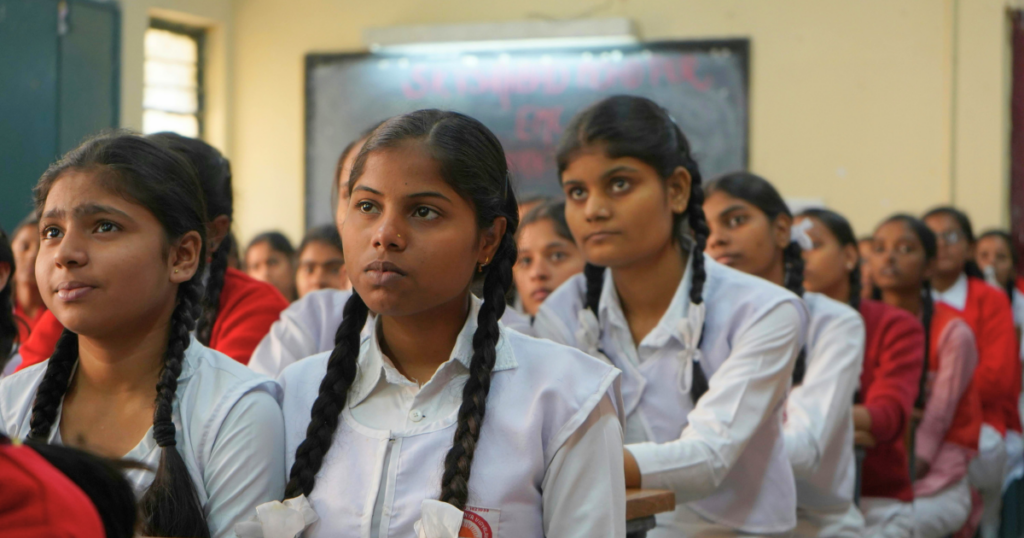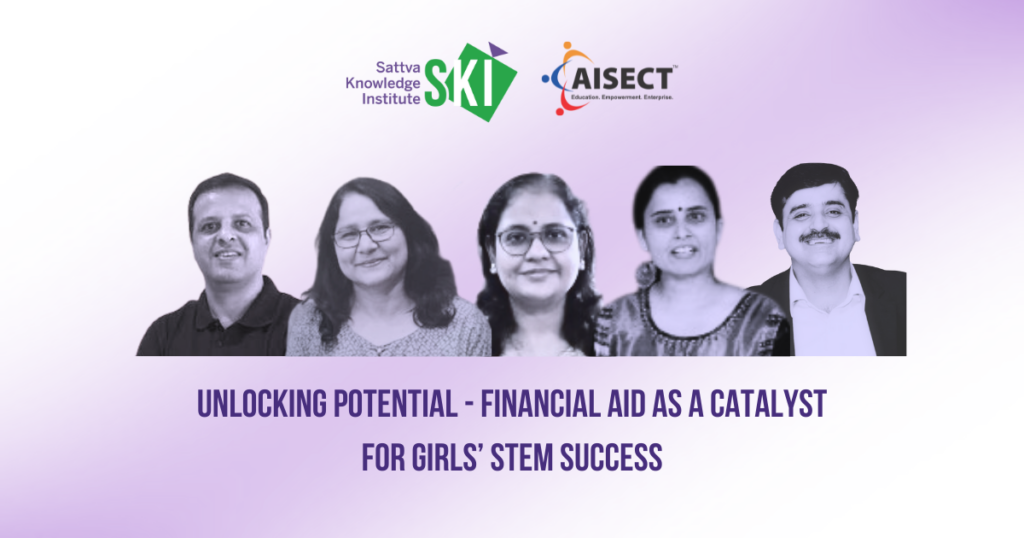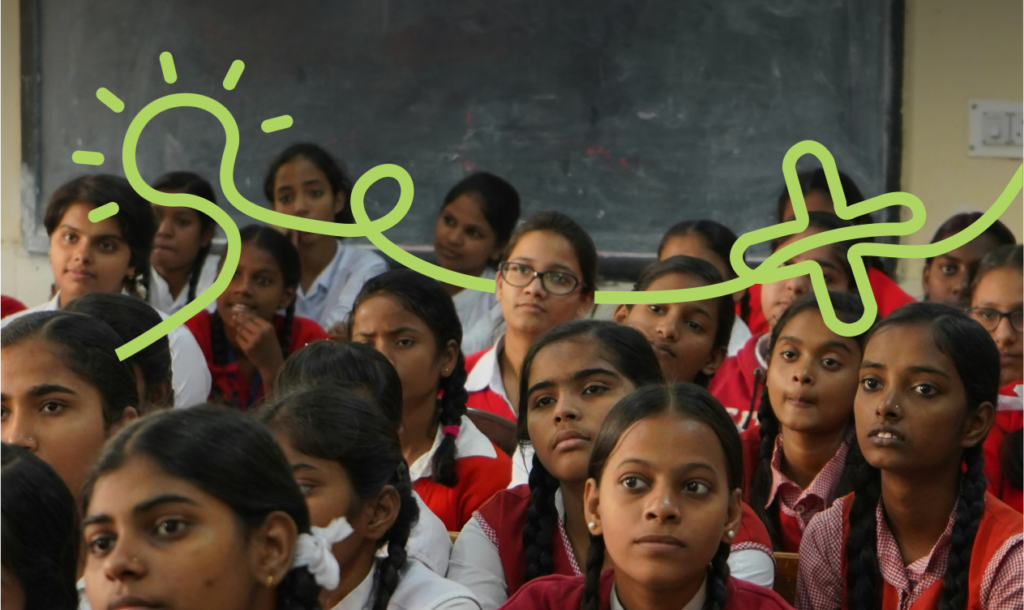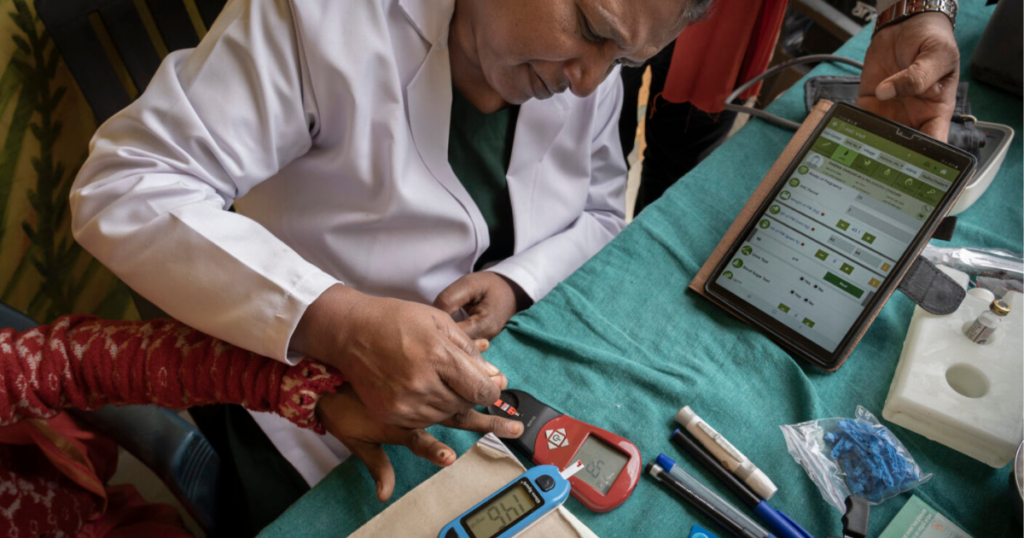School to Work (StW) Transition comprises the building of prerequisite skills for the world of work during schooling, and stable employment post schooling. Four capabilities are essential for a successful StW transition – foundational skills, transferable skills, occupational competencies and employment outcomes. A successful StW transition strategy can play a critical role in achieving India’s ambition of attaining a $5 trillion economy by 2030 and overcoming the NEET (Not In Employment, Education and Training) crisis. 36% of India’s youth population is NEET and the situation is worse for women (>50%), especially in states like UP, West Bengal, MP and Punjab.
Youth unemployment is a major challenge in India, where the informal workforce and its contribution to the GDP is also growing. High dropout rates and low foundational skills at secondary levels lead to reduced readiness for vocational education programmes. At the same time, 85% of the schools failing to implement vocational education in school also makes access a big challenge. Regional and social disparities aggravate the problem.
The landscape of vocational education and training (VET) in India is marked by efforts to align programmes with the National Skills Qualification Framework (NSQF), encompassing a diverse range of courses across 19 sectors. The National Education Policy has directed the initiation of VET from Grade 6 onwards to make students employable for a broad range of occupations after Grade 12. The NEP 2020 envisions integrating vocational education into mainstream education at school level, with several entry and exit schemes for the students to attain certifications, degree and occupations. Despite various efforts and recommendations, vocational education delivery is marred by issues like irrelevance of curriculum, redundant pedagogy and unavailability of industry experts. These lead students to join the workforce without acquiring necessary skill sets. Reliance on private institutions, particularly in the case of ITIs, continues, with their high fees adding to accessibility challenges.
The Ministry of Skill Development and Entrepreneurship highlights the requirement of 109.73 million skilled manpower in 24 key sectors. However, the skewed uptake of skilling towards IT and Electronics sectors underlines the importance of tailoring VET to meet the diverse needs of the economy. Additionally, the stark gender disparities in access to formal or informal vocational training reveal a critical area for intervention. Skill training also reflects cultural biases, with more men opting for new-age sectors, as compared to women, who are in more visible in traditional sectors like textiles and care. India’s vocational education system faces challenges at four levels. At a structural level it grapples with a lack of qualified teachers and poor funding, negative perceptions of vocational education, and issues with matching the curriculum to industry needs. At a managerial level, there is a scarcity of certifications, apprenticeships, and strong employer connections after training. Accountability, budget optimisation, and gender-inclusive vocational pathways are missing. At the classroom level, addressing the digital divide and improving the curriculum is essential. Personal hurdles include limited career guidance and role models. Overcoming these challenges requires strategic policy reforms, increased funding, and extensive career awareness initiatives.
Several models can be replicated in the Indian education system to attain the desired results from VET at the school level. These include China’s model of government-industry collaboration to provide free and relevant VET for students and adults; Tata Trusts’ model for bringing marginalised youth into the mainstream through VET; CIFF’s model to provide life skills along with technical skills for girls and Sarthak’s model to impart vocational skills to the differently abled. Multilaterals like World Bank and UNICEF have adopted infrastructure development and career guidance as an approach to contribute to VET in India. Projects like ABLE and MAST are technology-based scalable models by AIF to build vocational skills. These case studies provide inputs to scale the interventions, and at the same time ensure smooth, inclusive school to work transition for students.
Authors: Dr Shweta Gaur, Anantha Narayan, Sarayu Mathur, Labhisha Meena, Harshita Kumari and Siddharth Rout




